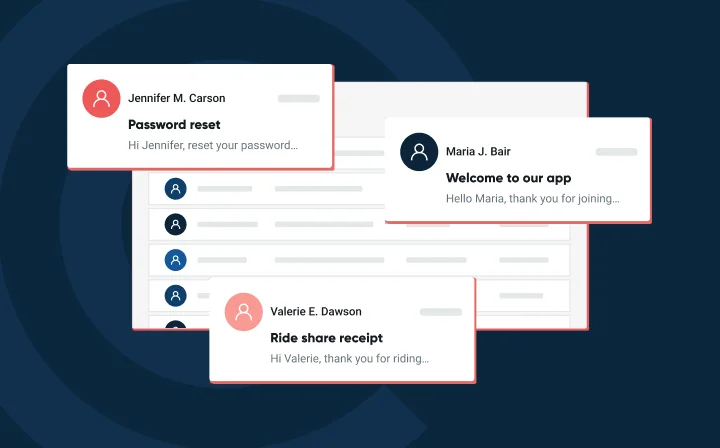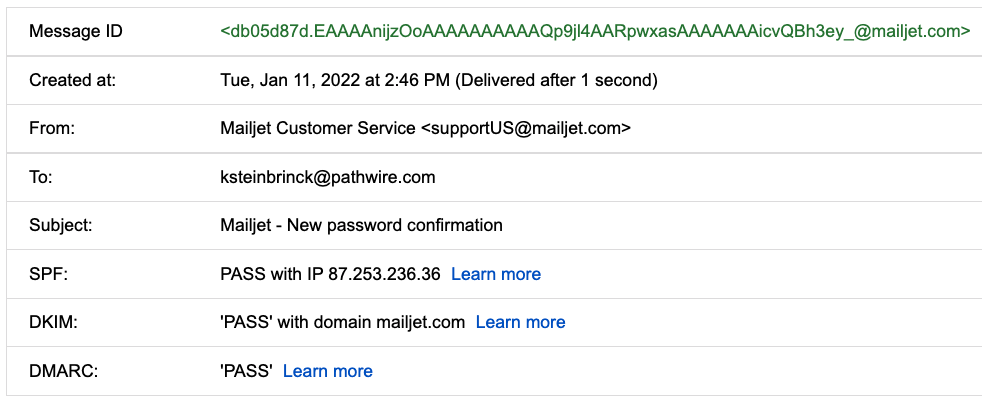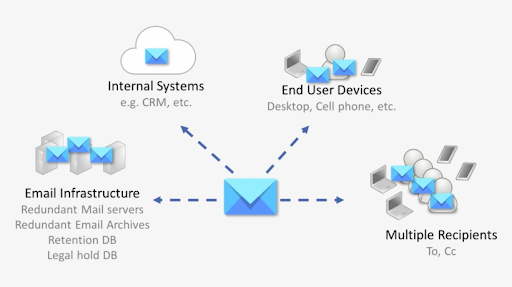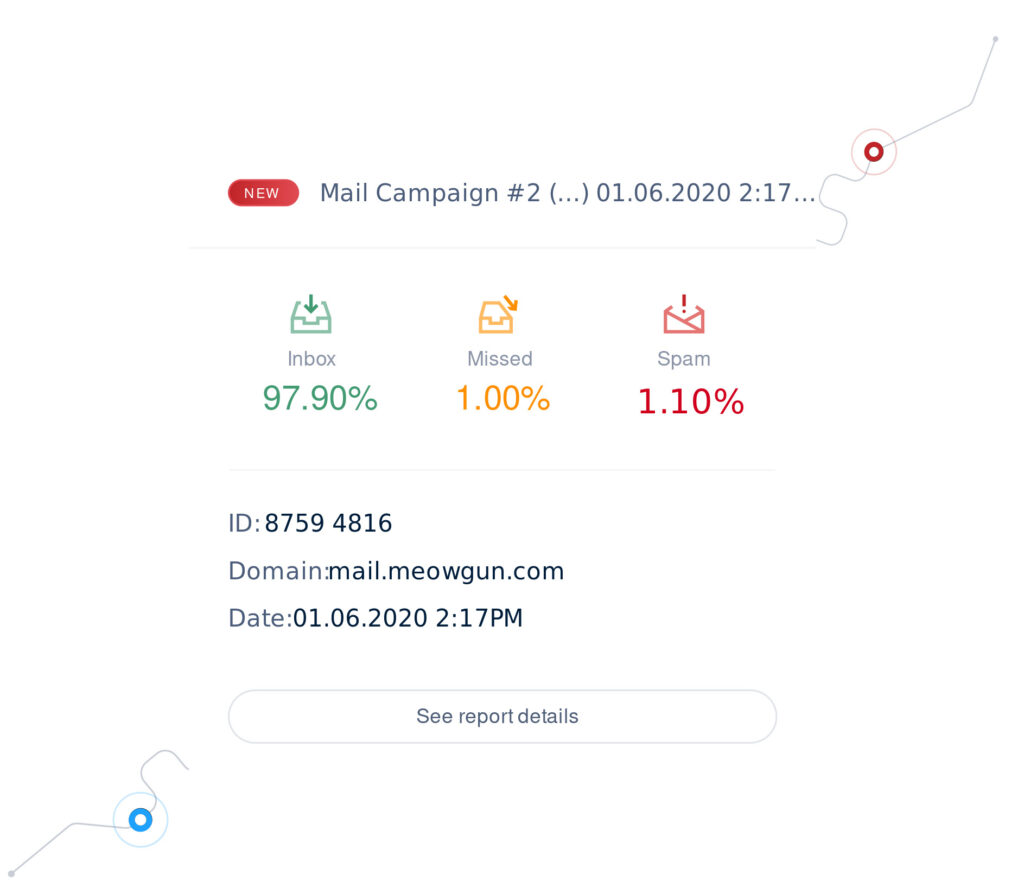How to conduct a comprehensive email deliverability audit


It usually starts with a sneaking suspicion that something is wrong with email deliverability. Maybe your hard bounce rate is higher than usual, or engagement is unexpectedly dropping. Perhaps a customer or colleague notifies you that your messages are landing in spam.
Whatever the case, you’ve got to pinpoint the problems and fix things as soon as possible. You need to determine how to conduct an email deliverability audit. And if you need a little guidance, we’ve got your back. Because we get it, deliverability matters… a lot.
Email is a critical communication and marketing channel. If messages aren’t making it into your subscribers’ inboxes, it’s not only a waste of time and effort, it could damage the business. That’s especially true with important transactional emails that customers need.
An email deliverability audit helps you unravel the mystery and get your messages in the inbox where they belong. So, grab your Sherlock Holmes cap, and let’s take a closer look at what’s involved.
When conducting an email deliverability audit, the purpose is to analyze all the elements that impact deliverability. The audit will measure deliverability rates, determine where email messages are getting delivered, and explore the factors that could be bringing deliverability rates down.
Those factors include:
A comprehensive email deliverability audit delves into each one of these aspects. First, however, you can run some tests to quickly identify major problems.
Before beginning the audit, there are manual checks and tools you can use to run an email deliverability test and uncover some important, big-picture insights. Think of these initial tests as shortcuts that show you where you’ll most likely need to focus your investigation.
Anne Angele of Marketo suggests sending an email to yourself to see where the message lands. She recommends using a Gmail address since its spam filters are known to be strict. You can also click “Show Original” in Gmail to quickly find out if it passed SPF, DKIM, and DMARC authentication.

Try an email deliverability test with images and links as well as a simple plain text email. If the plain text email lands in spam, it’s likely you have a sender reputation problem and may be blocklisted.
There are also a variety of free and paid tools you can use to test for deliverability concerns:

The tests you run with tools like these will inform your next steps as you conduct the audit. For example, the sender in the test above would want to look into who blocklisted them and take steps to get removed.
Many different things impact email deliverability. Even if you have a strong sense of what’s causing delivery failures, conducting an audit could reveal other ways to improve deliverability.
The following factors represent some essential ways to check email deliverability as you conduct your audit:
A good first step when compiling an email deliverability audit is to check out your overall email delivery rate. It’s important to note that delivery rates and email deliverability are related but not synonymous.
The delivery rate measures the percentage of emails that make it to recipients’ mailboxes. Deliverability, however, is also about where they end up on. Any email that doesn’t bounce is considered “delivered.” But it could go to spam or get rejected due to an authentication failure.
This information should be easy to get from the analytics and reporting that your email service provider (ESP) gives you.
The average delivery rate among all senders is around 85%. But let’s be clear… that is not a good delivery rate at all. Senders should aim for a delivery rate of 95% or higher. Mailgun users have an average delivery rate of 97.4%.
This data is a good “temperature check” for email deliverability. Then, you can dig deeper as you move forward. If your transactional emails and commercial/marketing emails are sent from different IPs, they’ll have different delivery rates. As a Mailgun user, you can take advantage of Inbox Placement to learn more about where emails actually land, which is extremely helpful for email deliverability auditing.
“Senders should aim for a delivery rate of 95% or higher. Mailgun users have an average delivery rate of 97.4%.”
Your next step is going to get a lot more technical. You’re going to review how your email infrastructure is set up and determine whether you’re using the best options for optimal deliverability.
Email infrastructure involves the combined systems (hardware and software) that allow you to send and receive email. It includes outgoing and incoming mail servers, sending domains, IP addresses, SMTP ports, as well as mail transfer agents (MTAs), and more.
The main goal in auditing email infrastructure for deliverability is to determine if you’re using the right setup for you as a sender. Since this is the foundation of your email program, you want to be sure email infrastructure is healthy and reliable. Here are some important infrastructure components to explore during the audit.

Simple Mail Transfer Protocol (SMTP) is what allows you to send emails from one server to another. So, there’s no doubt that the way you’re using SMTP will have an impact on deliverability. SMTP servers talk with receiving mail servers (IMAP and POP3), but as a sender focused on deliverability, SMTP is the only thing in your control.
There are a variety of SMTP ports senders can use for outbound mail. Two of the most commonly used are Port 25 and Port 587.
Port 25 has been around almost as long as SMTP, and a lot of mail is sent through it, but so is a lot of spam. It’s even been called the spam superhighway. Port 25 is still the primary method of SMTP relaying, but unless you’re managing your own mail servers, we don’t recommend using it. Many internet service providers (ISPs) block Port 25.
Mailgun highly recommends using Port 587 coupled with TLS encryption to ensure email is submitted securely. However, there are instances when a sender may need to use another port. Mailgun uses several different SMTP ports for messaging, and the SMTP port that fits your organization best will depend on your specific messaging, recipients, and goals.
The most common reason for SMTP failures is an incorrect outbound mail configuration. This could result in problems such as an automated password reset email never reaching the recipient. So, if there are issues with delivery, you’ll want to check the configuration with your mail provider.
IP addresses can be shared or dedicated. When you’re sending from a shared IP, the reputation of other brands could hurt your deliverability. But if you’re sending from a dedicated IP, email deliverability problems are all your responsibility.
If shady senders are on your shared IP, switching to a dedicated IP could certainly improve email deliverability. A dedicated IP is most useful if you’re a high-volume sender. However, a trustworthy ESP will work to make sure shared IPs are free of spammers. Mailgun actively monitors its shared IP addresses and keeps bad actors off the platform.
Your IP reputation is the biggest email deliverability factor to manage, and you’ll explore that more when reviewing sender reputation during the audit.
A related deliverability factor for senders with dedicated IPs is the process of IP warming. When too much email is sent from a new IP address too quickly, mailbox providers may get suspicious. An IP warmup strategy gradually increases volume and frequency over time to ensure deliverability. Just keep in mind, it can take a month or more to establish a good reputation with mailbox providers.
Many high-volume senders use domain names (or subdomains) for outgoing email other than the main domain used for web hosting. You could also take things a step further and have marketing emails come from one subdomain while transactional emails come from another.
Isolating domains can make it easier to manage domain reputation, which is another important part of your sender reputation. So, it could look something like this:
This is helpful because subdomains have a separate reputation from the root domain. So, if for some reason subscribers start marking marketing emails as spam, it won’t impact the deliverability of important transactional emails that customers need.
During the audit, as you review the systems and protocols you’re using to send email, ask these big picture questions about the infrastructure:
Here are some online tools to help test and evaluate email infrastructure:
Mailgun also offers a variety of solutions for managing and monitoring email infrastructure. That includes cutting-edge SMTP services, automated IP warmup, and email reputation services.
Failure to set up proper email authentication can definitely have a negative effect on deliverability. Ensuring the right configuration is in place should be a priority during your email deliverability audit. Like infrastructure, this is another topic that may require assistance from IT or hiring outside expertise if you hit technical roadblocks.
The three main email authentication protocols are:
Email authentication protocols are all specific records that live on a sender’s domain name server (DNS). An error in these records, or the absence of the records, can cause deliverability problems.
While you don’t necessarily need all three of these protocols in place to get an email delivered, doing so does greatly improve your chances of better deliverability and supports a strong sender reputation.
In addition to the manual check using Gmail we mentioned earlier, there are a variety of free online tools you can use to generate detailed reports on email authentication. Many of them are DMARC testing tools since that policy looks for both SPF and DKIM authentication.
Here are several tools to try:

After running these tests, you’ll be able to see if there are any authentication failures. You’ll also be able to check how strong your DMARC policy is. If authentication is set up properly, it’s highly recommended that DMARC be set to p=quarantine at a minimum. This tells mailbox providers to keep suspicious emails out of the main inbox.
Joan Jett may not “give a damn” about her sender reputation, but you definitely should.
Internet service providers (ISPs) have their own opinions about email senders. Every sender gets a score. If your score falls too low, your emails could start going into the junk folder. Worse yet – they’ll get rejected and won’t be delivered at all.
Your sender reputation is based on two main areas:
The type of content you send can also impact sender reputation. As you might guess, sending emails with viruses or using tactics to try and acquire sensitive information will hurt your reputation. But if subscribers simply aren’t opening or interacting with your emails, that can also be a sign of poor quality content.
Each ISP has an algorithm for its own sender reputation scoring system. So for example, your email deliverability could be fine to Apple Mail recipients but you have deliverability issues with Outlook because it gave you a lower score. Optimizing IP and domain reputation should be on the top of your list of action items if there are deliverability issues.
There are some tools that aggregate a score for your sender reputation, and there are also services that give you information about how specific mailbox providers view you as a sender.
Use the following resources to help you audit sender reputation:
Found some reputation problems using these tools? Here’s where to start looking at your emails for the sources of poor sender reputation:
Practicing good email list hygiene is a lot like personal hygiene. Forget to shower and your body will start to stink. Forget to clean your contacts and deliverability will start to stink.
If you want to prevent email deliverability problems, a reliable email list cleaning service helps eliminate inactive or invalid addresses and spam traps. It’s best practice to clean your lists at least once per quarter.
The methods used to build your email list can also lead to deliverability problems. It should go without saying that you should never buy a list of emails. That’s a surefire way to land in a spam trap.
You can make list hygiene and address verification part of your email deliverability audit, especially if your list hasn’t been cleaned in a while. If you discover you have a list that’s littered with bad contacts, start using an email verification service moving forward.
Do a little investigating to find out more about how the contacts in your database were acquired. Is your organization following list-building best practices?
You should be using an opt-in form to collect new email addresses, and a double opt-in is an even better idea. Then, you can include email address verification as part of the sign-up process. Finally, be sure your emails make it easy to unsubscribe. Every message you send should include an unsubscribe link.
If you don’t have any significant issues with infrastructure, authentication, sender reputation, or list management, then it’s possible the content of individual email campaigns is a problem. The next step in your email deliverability audit should put those emails under the microscope.
Email design and copy could have an indirect effect on deliverability. That’s because the power to report your messages as spam is in the hands of subscribers. If they find your email to be suspicious because of the language you use or because the design appears inconsistent with what they expect, it could raise red flags. Check out our Email’s Not Dead podcast episode with Matthew Smith of Really Good Emails for more insights on the impact of campaign design.
If you evaluate individual campaigns during an email deliverability audit, pay close attention to those that tend to get more spam complaints, unsubscribes, and low engagement. Keep in mind that simpler emails tend to be less likely to land in spam folders. So, start by taking a look at your biggest most complex email marketing campaigns.
This is another ideal opportunity to use Mailgun’s Inbox Placement feature to see if individual email campaigns are landing in spam more often than you’d expect.

Here are a few email content factors that may hurt deliverability:
All the factors above are things that may accidentally make you look like a spammer. To be safe, you’ll want to avoid other types of content that could do the same.
Once the email deliverability audit is complete, you should have a clear picture of the problems you need to address. Here’s a quick recap of the key steps:
Use the results of your email deliverability audit to compile a list of action items and recommendations. Prioritize these items and delegate responsibilities to the right people. For example, you may want to talk to marketing about changing their email acquisition practices. Or, you may want to ask IT to update DNS records for authentication.
Some things, such as improving your sender reputation, getting removed from a blocklist, or setting up authentication protocols may take some time before you see results. Others, like list building and spammy content, can be addressed immediately.
Email deliverability is complex. That’s why many larger organizations have in-house experts who make deliverability their full-time job. However, if an email deliverability audit feels overwhelming, or the action items on your plate are too much to handle, there is help out there.
A partner like Sinch Mailgun provides tools to help make the auditing process and ongoing deliverability monitoring easier. Our solutions include the Mailgun Optimize deliverability suite. Plus, when you sign up for our deliverability services, you can rely on dedicated experts who’ll help you create a customized strategy.